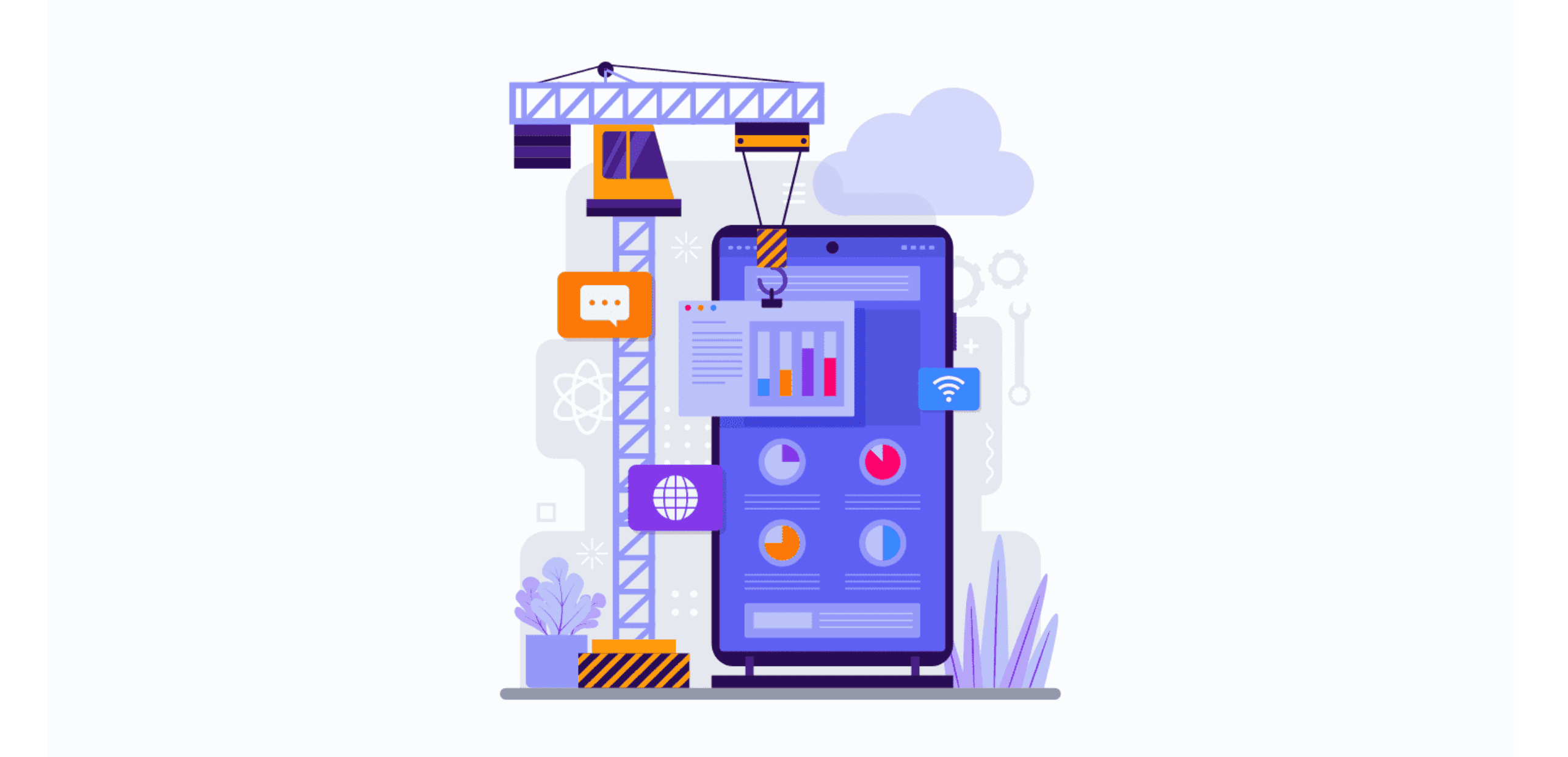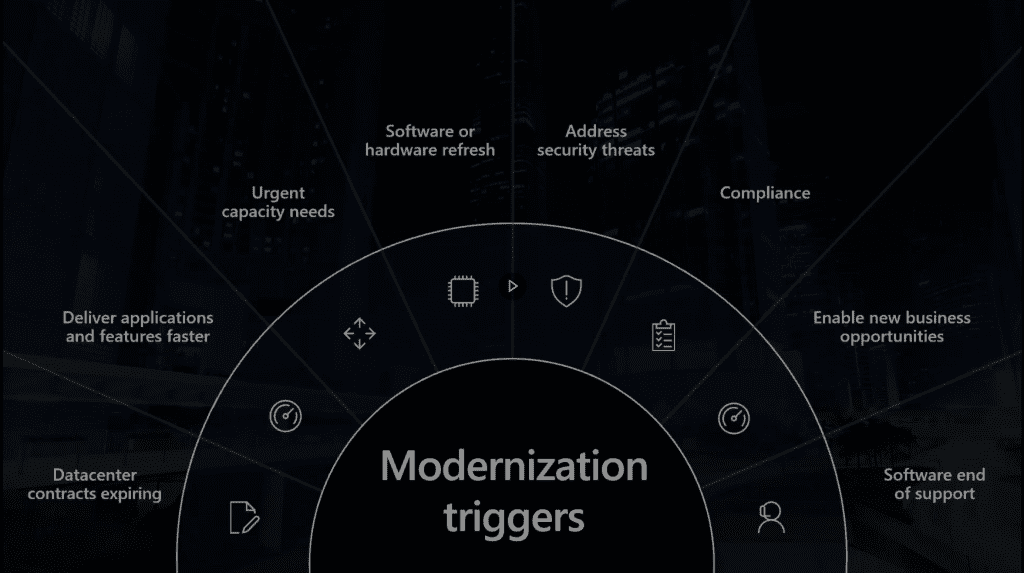Organizations preparing to digitally transform their business must determine how to modernize existing applications and infrastructure to achieve their targeted business goals.
There are many paths towards modernization: your organization could replatform the applications to the cloud and integrate with advanced, high-value services subsequently, or you could start from scratch by building new applications specifically for the cloud.
These decisions are specific to your company and depend on your business goals. The retail industry, for example, is seeing benefits as they migrate their workloads to the Cloud to provide a more personalized customer shopping experience. Retailers can collect and analyze customers’ shopping patterns and make recommendations on additional purchasing options.

The decision to migrate or modernize is a big one. You may have some questions, including:
- How do I ensure that my existing applications take maximum advantage of the cloud?
- How can server migration help my business save money?
- How can I minimize disruption to my business as I modernize my apps?
We will answer some of these questions in the following paragraphs.
Triggers for migration and modernization
Keeping up with the speed of change in the business world is challenging. Technology is opening entirely new markets and creating innovative ways to serve customers. More and more organizations push digital innovation beyond experimentation to drive competitive advantage and continuously deliver value. At the same time, app-driven disruption provides exponential growth opportunities.
Application portfolio assessment
To start your migration and modernization journey, you’ll want to assess your current portfolio of applications and data assets, as well as their relationship to your company’s business functions. The goal is to determine where the current suite of applications fits in your long-term digital strategy and how well it supports evolving business models.
An Application Portfolio Assessment helps an organization better understand its existing application environment. The assessment focuses on understanding an application’s business value and technical characteristics. These dimensions will help define the modernization technique to be used and the potential business value of the modernization approach.
You’ll want to first assess your current applications, prioritize their value, plan their future use, and execute on this plan.
Just as your current assets were built or acquired over a long period of time, application modernization should be a gradual change. You can consult with a Microsoft partner, such as Zitec, to assist with your application portfolio assessment.
Modernizing applications via Cloud migration
One of the primary goals of an assessment is to chart a transformation path for each application in the portfolio using, for instance, the “6R’s of application migration” methodology. Based on this framework, for each application in your portfolio you can decide to take one of the following paths.
I) Retire
Based on our previous experience, each company operates a significant number of redundant digital assets that can simply be decommissioned
II) Retain
Certain apps are black boxes and changes can no longer be made to them without affecting their stability. These applications should ideally be left unchanged and a replacement plan should be prepared for each one.
III) Rehost
Rehosting is also referred to as a lift-and-shift migration. The application is moved from an on-premises server into the IaaS environment of Azure, avoiding modifications to the system. With this approach, cloud benefits are quickly unlocked, and you can take advantage of advanced cloud capabilities, such as autoscaling and improved resiliency, while gradually modernizing afterwards.
Microsoft has designed the Azure IaaS solution to offer a large set of advantages, just by lifting-and-shifting an application into the cloud:
- Infrastructure for all workloads: Built to run all types of workloads from custom-built to purchased software.
- Hybrid by design: Capabilities to connect your on-premises and cloud solutions.
- Secure and well-managed: Advanced management tools for all your solutions.
- Cost-effective
IV) Replatform
Replatforming is our preferred tactic when migrating applications to the cloud because it allows companies to quickly achieve tangible benefits without investing significant resources. By adopting managed cloud services that provide a cloud-based equivalent of frequently used products such as relational databases or in-memory caches, organizations can reduce administrative costs and increase uptime.
V) Re-purchase
Move certain workloads that might be operated (or even developed) by your organization to a SaaS equivalent. For instance, you could replace your self-managed project management tool with Jira Cloud or your CRM with Zoho CRM.
VI) Refactor
Alter your application’s architecture to use cloud-native features and services such as serverless functions. This enables seamless application scaling, while also significantly reducing operating expenses, but comes with a relatively high implementation/adoption cost.
We prefer to take a pragmatic approach and encourage organizations to start with one of the 5 R’s that precede refactoring and then plan for an incremental refactoring of the applications in order to benefit from cloud-native services.

There are several cloud service models you can choose from, including IaaS (Infrastructure-as-a-Service) and PaaS (Platform-as-a-Service), and you can move at your own pace.
With the right approach, you can modernize a portfolio of applications in the right way, yielding value more quickly and at a lower cost. This makes it easier and less expensive to stay up-to-date, as products and technologies continue to evolve.
Other Application Modernization Strategies

Refactoring with container technology
Containers are a packaging mechanism in which applications are abstracted from the environment in which they run, allowing your applications to be more portable.
There are a few benefits to the use of containers to ‘wrap’ or containerize existing programs, including the ability to minimize complexity by using abstractions from containers. Containers eliminate dependencies on the underlying infrastructure services, thus reducing the difficulty of dealing with the platforms involved. This implies that access to resources, such as storage or applications, can be abstracted. This makes the application portable, but also speeds up application refactoring, as much of the access to native cloud resources is handled by the containers.
There are also other advantages to containerization to take into consideration:
- Containers offer the opportunity to optimize their portability and, with portability, their value by leveraging automation. Via the use of automation, we’re scripting a function we might also do manually, in essence, such as migrating containers from one cloud to another.
- The capacity to provide better security and governance services is also immense, by bringing such services around rather than inside containers. Security and governance services, in many ways, are platform-specific, not application-specific. Older programs, for instance, tend not to have security and governance functions within them. When refactoring, the ability to position security and governance resources outside the application domain offers greater portability and less complexity.
- Containers can also have better-distributed capabilities for computing. It is possible to split an application into several different domains, all residing inside containers. These containers, including those that offer the highest cost and efficiency efficiencies, can be run on any number of various cloud platforms. Thus, applications may be distributed and configured from inside the container according to their use of the framework.
Rearchitecting with microservices
In a microservices architecture, the application is composed of small, independent services. Here are some of the defining characteristics of microservices:
- Each microservice executes a single business capability.
- A microservice is small enough that a single small team of developers can write and maintain it.
- Microservices run in separate processes, communicating through well-defined APIs or messaging patterns.
- Microservices do not share data stores or data schemas. Each microservice is responsible for managing its own data.
- Microservices have separate code bases and do not share source code. They may use common utility libraries, however.
- Each microservice can be deployed and updated independently of other services.
Done correctly, microservices can provide several benefits:
Agility
Microservices are deployed independently, it’s easier to manage bug fixes and feature releases. You can update a service without redeploying the entire application and roll back an update if something goes wrong.
Small code, small teams
A microservice should be small enough that a single feature team can build, test, and deploy it. Small code bases are easier to understand.
Mix of technologies
Teams can pick the technology that best fits their service, using a mix of technology stacks as appropriate.
Resiliency
If an individual microservice becomes unavailable, it won’t disrupt the entire application, as long as any upstream microservices are designed to handle faults correctly (for example, by implementing circuit breaking).
Scalability
Microservices architecture allows each microservice to be scaled independently of the others. That lets you scale out subsystems that require more resources, without scaling out the entire application.
Data isolation
It is much easier to perform schema updates, because only a single microservice is impacted.
Key takeaways
The application and infrastructure migration and modernization process allows you to take advantage of the Cloud and positions your organization for success. Azure offers modern infrastructure for all workloads, true hybrid capabilities, and secure and well-managed solutions. It is also cost-effective across the board.
- Some of the common modernization triggers include the need to deliver applications and features faster, urgent capacity needs, or a software or hardware refresh.
- An application portfolio assessment will help you determine where the current suite of applications fits in your long-term digital strategy and how well it supports evolving business models.
- Each application can take a different journey to the cloud, including: rehost, refactor/rearchitect and rebuild.
Accelerate your growth
Whether you are looking for a technology partner to drive your company’s growth or a security provider to safeguard your assets, our team would be happy to assist you with your challenges.







.webp)
